The Job Market
Recruiter.com's job data and job numbers based on the insights of our network of over 40,000 recruiters and HR professionals.
Our jobs report is updated monthly. For media inquiries, please email pr@recruiter.com.
Need help with your hiring?
Job Market Overview
The September 2022 Recruiter Index results show that both recruiter sentiment and candidate sentiment witnessed a slight decline.
The average recruiter sentiment decreased this month to 3.5, while the average amount of roles recruiters are working held steady at ten.
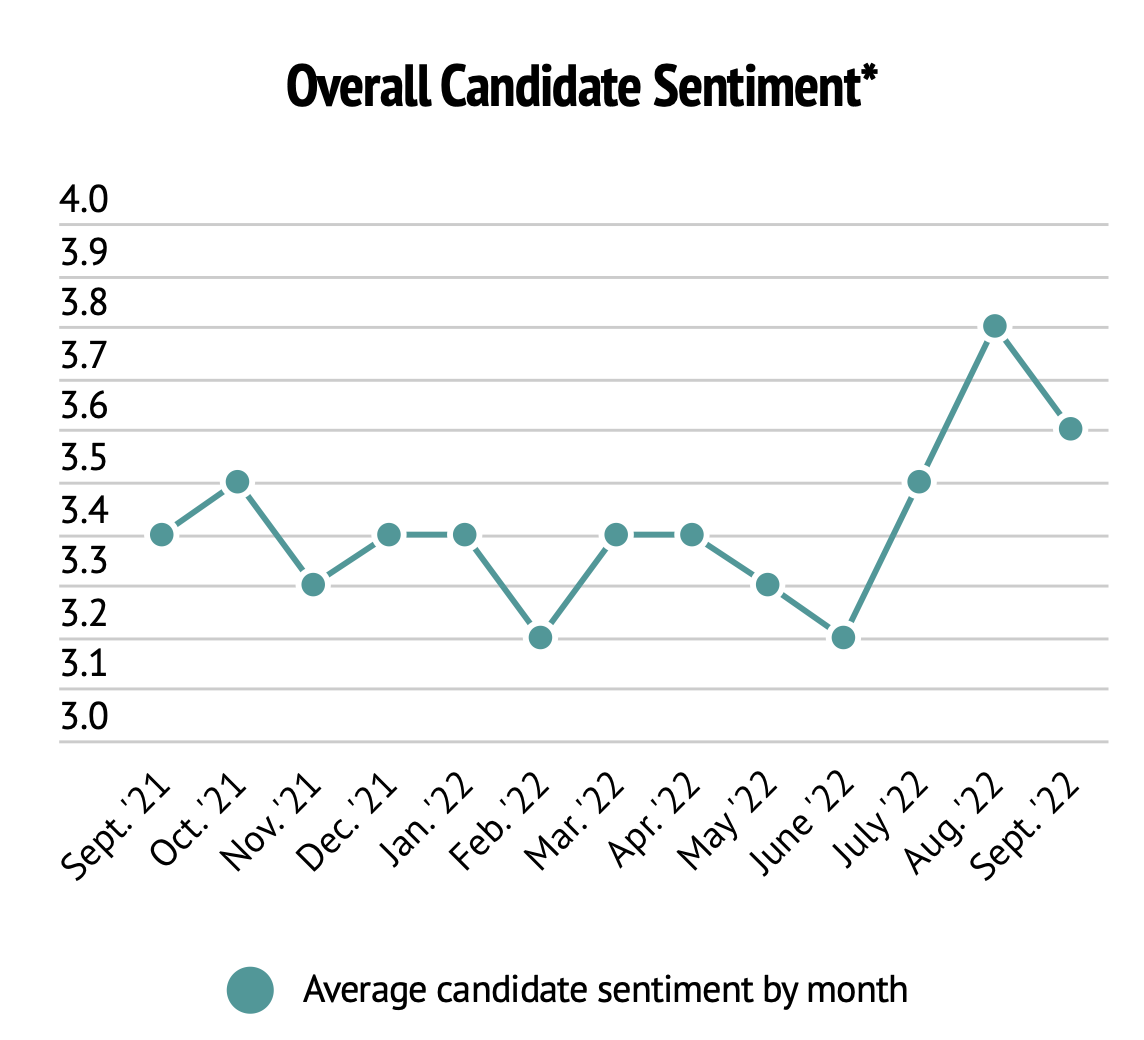
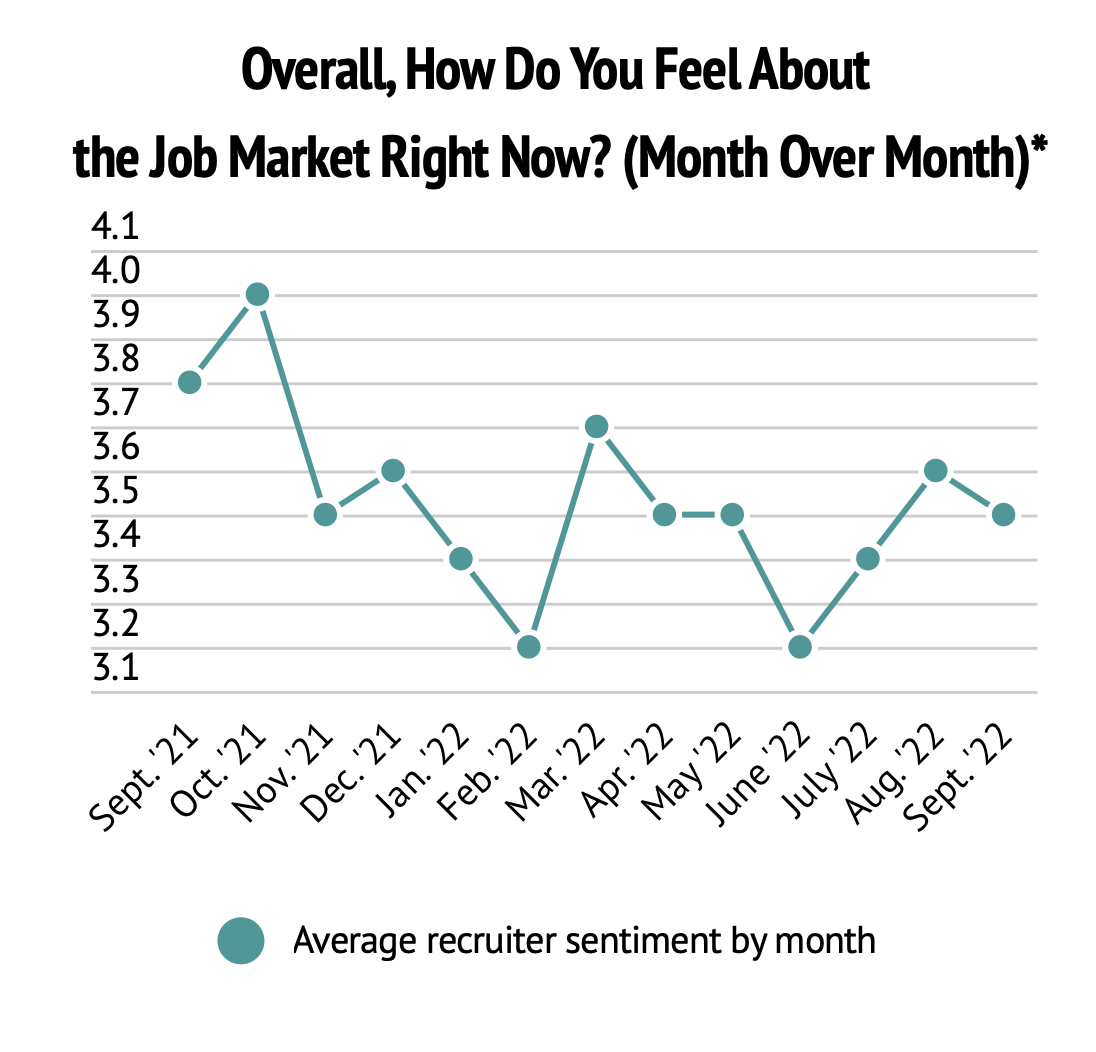
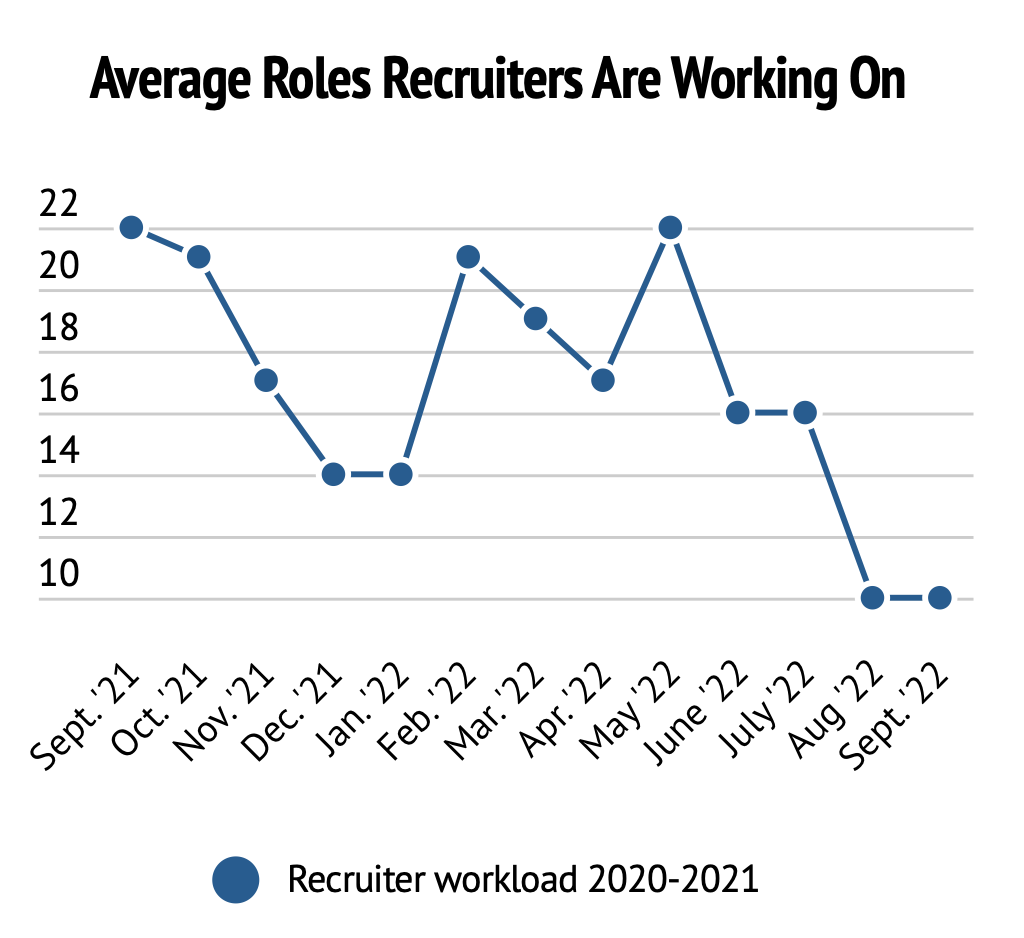
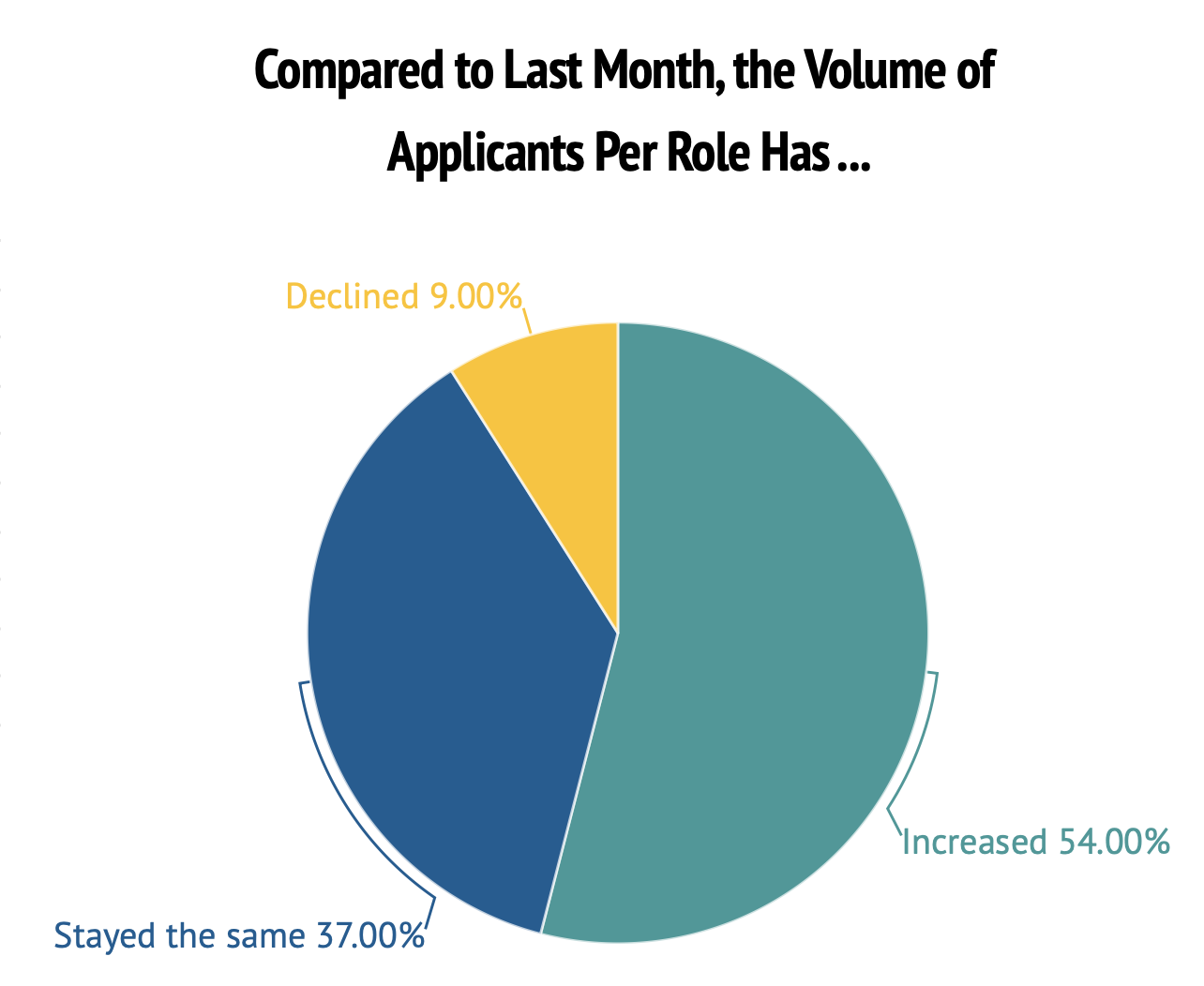
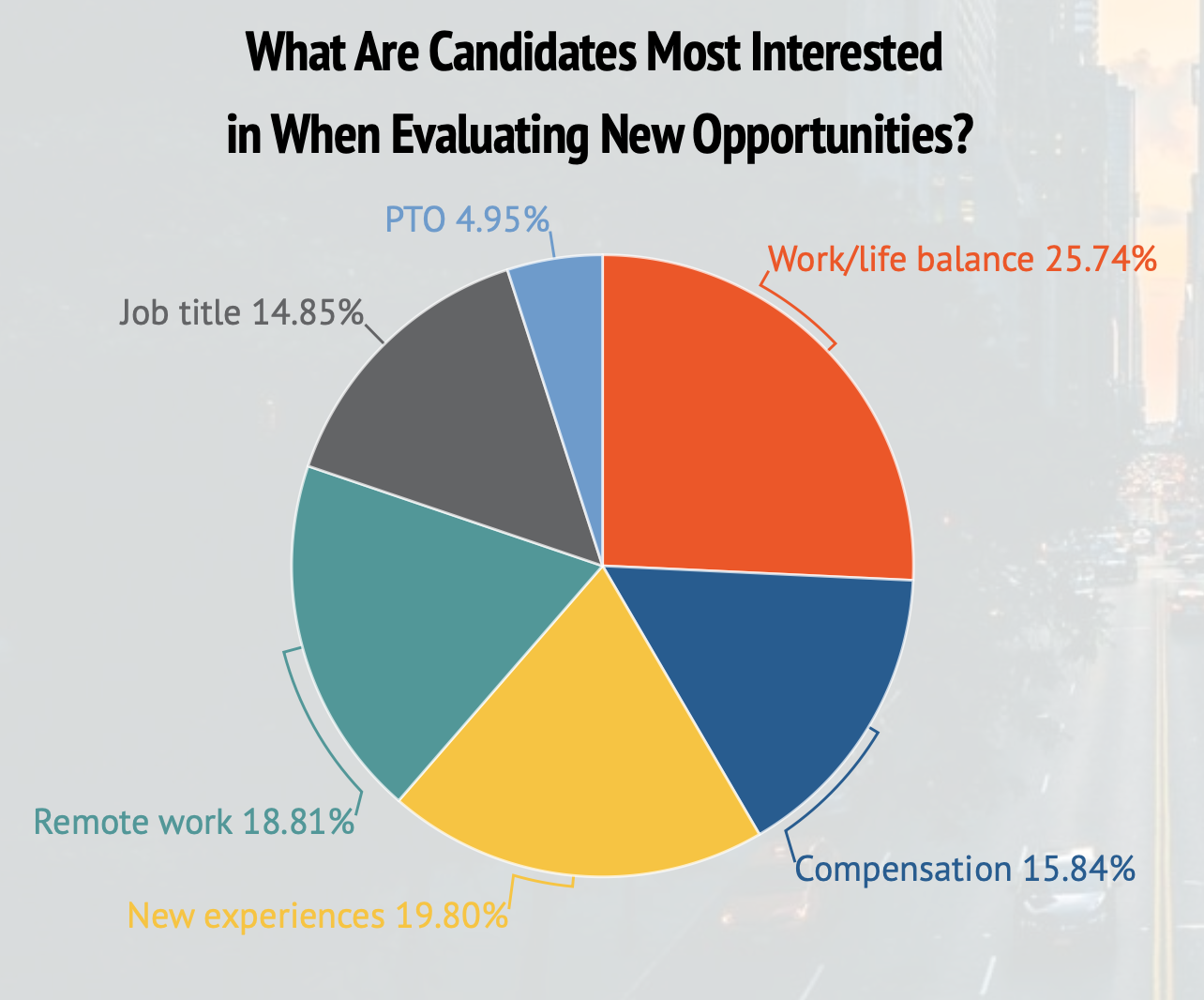
What Is the Job Market?
The job market is a concept meant to evoke the structures of competition, exchange, and the interplay between employers searching for employees and employees searching for work. It is an essential aspect for employers and job seekers.
The demand for labor in a given economy will grow or shrink based on the market for jobs. It will look at the urgent demand for different industries, the level of education needed for those positions, and other factors that will affect the market. When the unemployment rate is high, the supply on the market for jobs increases, and the market may even see job gains. This gives employers a chance to be more selective in their hires and offer lower wages. When the unemployment rate drops, employers will have to compete for the best talent, and they will need to raise wages and provide other benefits.
If you want to look more in-depth at the job market, you should study the field of economics. Economics also looks at how labor affects the overall economy through the study of labor economics. Labor is defined as the measure of work that people do, contrasted with the economic circles from capital and land, affecting production. Some people will also refer to "human capital" as employees' skills and abilities. A labor economist will look at workers, employers, and patterns from the distribution of total employment, income, or wages.
When you're learning about the job markets, you should understand the supply and demand of different industries. You'll also learn how to look at the career outlook for various careers.
However, when analyzing the job market, look at the local employment market. If you don't know how to interpret the local job market, a professional recruiting agency or an employment center should understand different hiring and economic conditions.
Different Parts of the Labor Market
This pool contains professionals who were eligible for the role and then applied because they met specific criteria.
Recruiters will typically contact this group of people to try and get them to send their applications and resumes in for consideration.
When a recruiter or a hiring manager chooses a candidate, the recruiter will offer them a position on behalf of the business they're representing. If a candidate accepts an offer, they will become an employee, and then they're off the job market until the next position comes along.
The Job Market and Unemployment Rate
The lowest rate of unemployment was in 2019 at 3.5%. However, the highest unemployment rate in the U.S. was recorded at 24.9% in 1933. If the unemployment rate is high, there is a more significant supply of labor in the economy and a lower demand for job openings from businesses. If there is a low unemployment rate, more people are working, but there could be more job openings. Typically, there aren't as many openings.
There are two types of job market conditions: a candidate's market and an employer's market. If employers have more applicants to choose from, they can offer lower wages and be pickier with their candidates. However, once the unemployment rates drop, candidates have the upper hand and can demand more wages, and employers may have to take whatever available workers there are.
The competition for these applicants will drive the salaries and wages that companies will offer. The cost of the wages is significant for economic analysts to judge how the overall economy is doing.
The unemployment number will generally rise when there is a difficult economic time. If it gets higher, employers may start letting employees go and slow down job creation, which will make it harder for more people to find work, which drives the unemployment rate even higher.
If unemployment rates stay too high for an extended period without any economic growth, it can halt the economy, affecting everyone's lives. The Federal Reserve may have to print more money, which can grow inflation and cause even more problems down the road.
In 2009, after the 2008 housing market crash, the unemployment rate reached 10%, but it eventually declined until February 2020, right when COVID-19 lockdowns started occurring. Companies had to adapt to the COVID-19 pandemic, so they had to lay off their employees to keep the business afloat. During that time, the unemployment rate hit 14.7%, which was the highest level since 1940.
The unemployment rate isn't the only factor that analysts look at when determining the job market's health. They also look at labor productivity, measured by the output produced for each hour of labor that went into making it. Productivity has become very important in multiple economies, primarily because of advancements in technology and efficient processes and improvements.
However, in the United States, productivity growth did not result in wage growth. Workers now create more goods and offer more services for each unit of time, but they aren't compensated on an equally scalable level. This could be another factor that will affect the job market's health.
For example, according to BLS data, the size of the workforce in the country grew from 24 million people to 139 million people. However, the nature of work also changed.
The top industries consisted of technical and professional service workers, like foresters or farmers. That same BLS data found that 38% of the labor force initially worked on farms at the beginning of the century, but only 3% of workers were on a farm by the end of the century. In addition, other industries like construction, manufacturing, and mining lost workers. In its place, service industries and corporate business growth companies started growing.
In addition to that, the demographic of working people also changed. Women started participating in the labor market, which is part of the reason that the size of the workforce changed so drastically. By looking at trends and patterns like these, we can start to identify them in the current job market and use it to predict what the future might bring.
How to Analyze the Job Market
-
Compare Salaries
-
Inform Recruiters
-
Identify Hot Markets
In a competitive market, you may even want to offer higher salaries than the average for that position. This could be great for your employer branding, but it could also help your retention rates. Knowing what the job market is like will give you insights into how much you should pay for a new hire.
For example, during the COVID-19 pandemic, recruiters could read the job market and notice a higher demand for health care professionals. Because of that, they could start curating a candidate pool and begin recruiting those professionals.
They should look at labor statistics websites and noticeable employment trends to find this information.
For example, if they notice that the tech industry is growing, they may want to think about creating a tech startup. Analyzing the job market could be the key to creating the next great company.
Since 2020, the Recruiter Index has predicted the Bureau of Labor Statistics job report before it even comes out. We can do this because we rely on talent acquisition professionals and recruiters. These professionals know the job market better than anyone else.
The Recruiter Index tracks many things, including an overview of the job market, an analysis of candidates, and the most currently active industries on the market. However, the Recruiter Index tracks the most critical aspects: the recruiter and candidate sentiment. Recruiter sentiment is how recruiters feel about the current job market. The candidate sentiment will show how open candidates are to new job opportunities.
Best Industries for the Job Market?
Right now, technology is one of the biggest industries, encompassing aspects like Artificial Intelligence (AI), biotechnology, cloud technology, and data analytics. Startups in these industries are succeeding, especially as a Software as a Service (SaaS) company.
As many people have also started buying homes and moving thanks to remote jobs, the real estate market is also really popular.
Sustainability is another industry that has become more popular as green technology advances and energy prices go up. More people realize the importance of going green, electric cars are more popular, and more people install solar panels on their homes.
After the COVID-19 pandemic, healthcare industries are also hot. There is a growing demand for healthcare professionals, and pharmaceutical companies are also growing as they conduct new research for new medicine and technology.
However, recruiters and staffing professionals are also in high demand right now. As many companies are still trying to recover from the pandemic and the Great Resignation, recruiters and staffers are the ones who will feel these positions. In fact, recruiters are so in-demand right now that companies even struggle to find and retain them.
How to Navigate a Tough Job Market
Market your Business
Recruiters and business owners will need to take on the role of marketing to advertise new job openings. They will need to be in tune with the job market to know what factor is most important to job seekers in the current market.
If you're trying to attract younger candidates, they may be interested in your company's sustainability, diversity, or other progressive initiatives. They may want to be able to volunteer or be a part of great company culture. If you're trying to attract applicants with more experience, they may be looking for a better work-life balance, daycare options, paternal leave, or a better retirement plan.
Your business should also be promoting job advertisements on social media and other niche job boards. Keep in mind that your current employees may even be able to help you market. They can bring in employee referrals and also promote your branding online.
However, you'll also want to analyze your compensation packages in a competitive market. This is usually the first factor that job seekers will look for when searching for job advertisements. In some states, it's even legally required to put the salary range in the job description. If you can't offer competitive compensation, you may want to provide a sign-on bonus or another valuable asset.
Brainstorm New Ideas
As the job market changes, the expectations and priorities of candidates will also change. Businesses need to start looking for good employees with the intention of training them. This is especially true for newer fields, like cryptocurrency or FinTech.
Rather than have your staff struggle, take the initiative into your own hands and grow your ideal employee. Look for people who are open to learning new things and train them to have all the qualifications you are looking for. You may even want to branch out and consider hiring part-time employees to help fill in some gaps.
Hire for talent, commitment, and personality. You can focus on training them on the rest as long as they have the essential skills.
Broaden your Horizon
If your standard strategies and talent pools aren't working for you, you may want to try new sourcing strategies to find the best employees. Now, advanced technology like artificial intelligence (AI) can enhance your recruiting strategy and improve your workflow.
This type of technology will help you identify more candidates and recruit them. You could also try recruiting on social media by meeting candidates where they are. You may even need to hire a recruiter monthly to gain access to their more expansive and diverse talent pool.
Recruiter.com is an expert in recruiting, and we have all the recruiting solutions you need to navigate through a tough job market. Whether you need to find niche job communities, need temporary help from contracted recruiters, or want to use powerful AI sourcing software, we have you covered. Contact us today to figure out which solution is the best option for your hiring process.
Job Market Resources
The "Job Market" is not a physical location or even an open space but rather a concept meant to evoke the structures of competition, exchange, and interplay between employers searching for employees and employees searching for work. It is an imperative aspect of employment and finding jobs. The overall demand for labor within a given economy, as well as the exigencies of any specific industry, the relative level of education and training for workers, and a host of other factors can cause the demand for labor to grow or to shrink and consequently the market for jobs to expand or contract. When the unemployment rate grows the supply on the market for jobs increases which gives employers the opportunity to be more selective in their hires and to force down wages. When the unemployment rate drops employers then have to compete for the best workers which consequently raises wages.
The field of economics which studies the job market and the effect which labour has on the overall economy is known as labor economics. Labour economists study workers, employers, and patterns which emerge in the dispersal of wages, employment, and income. Labor, which is generally defined as the measure of work done by human beings, is contrasted in economic circles from land and capital, which also effect production. Some have proposed the term "human capital" to refer to the skills and abilities which workers possess, but other macro-economists have suggested that such language is a contradiction in terms.
The most important function of learning about job markets is to understand the supply and demand of particular types of talent and to understand the career outlook for a given profession. It is often a good idea to consult with professionals deeply involved in the local employment market. Usually professional agency recruiters, job coaches, and employment center personnel have a nuanced and detailed understanding of local hiring conditions and connections with local employers.